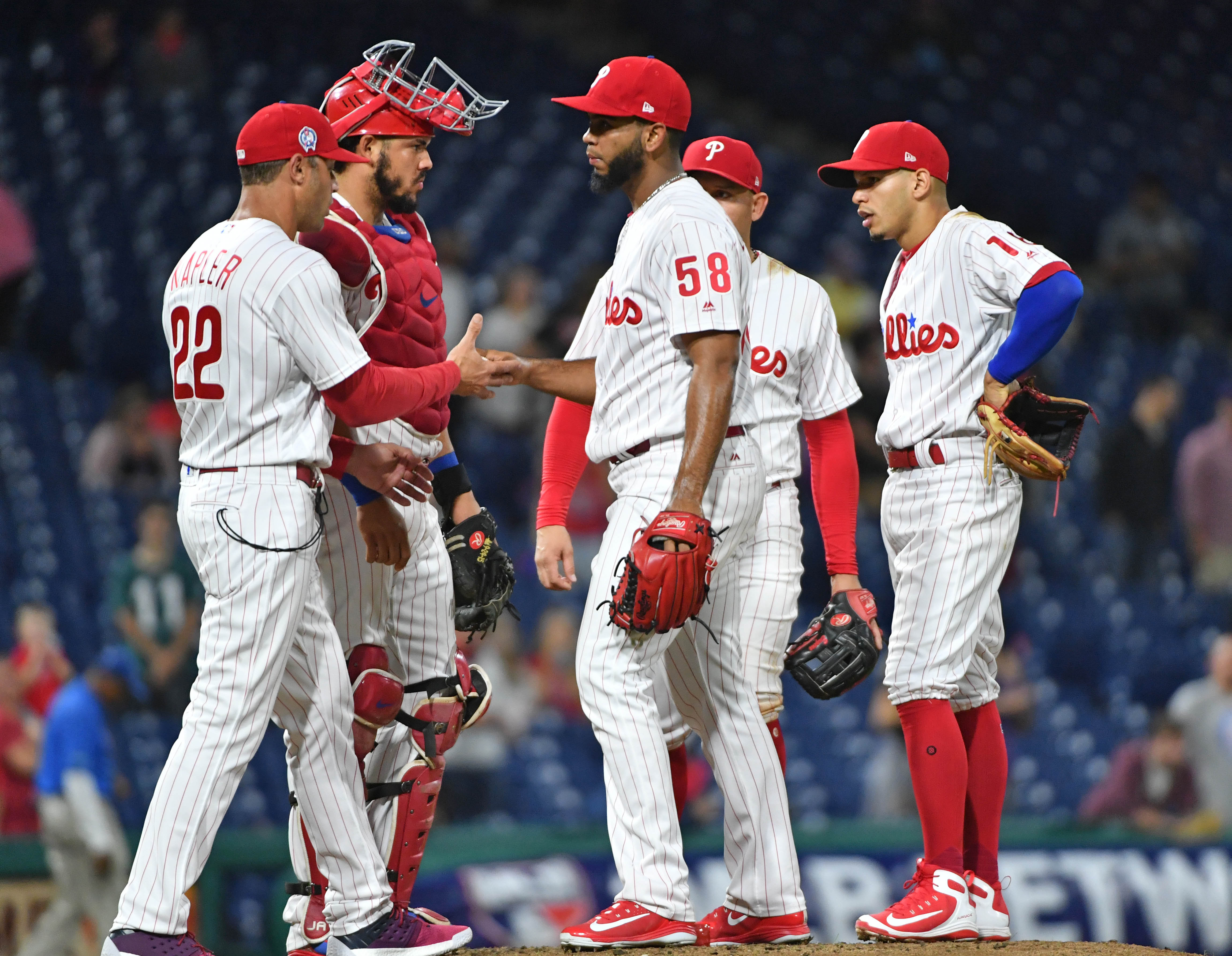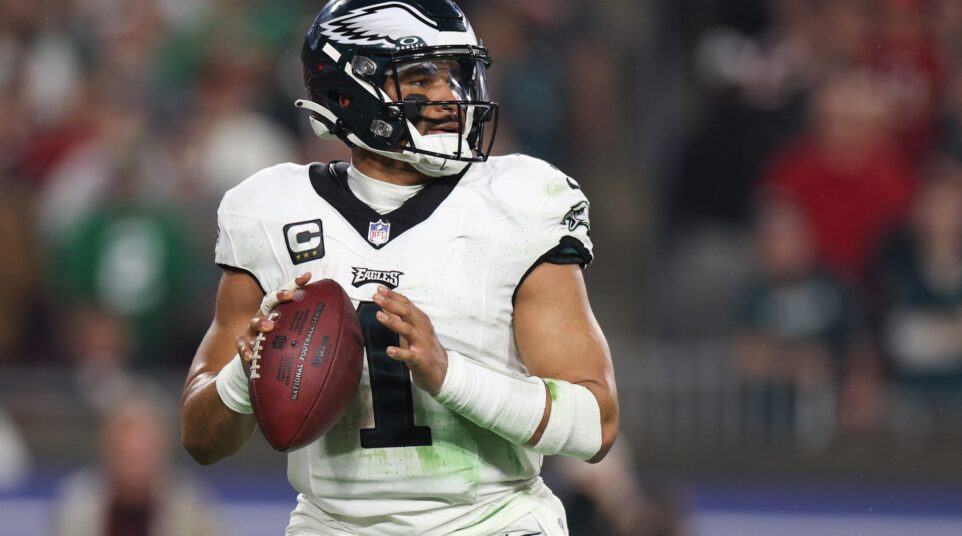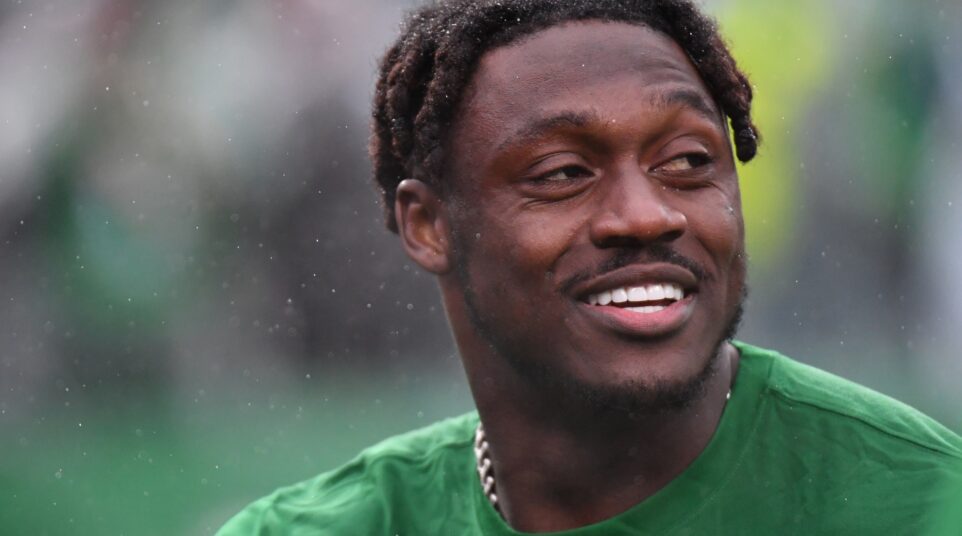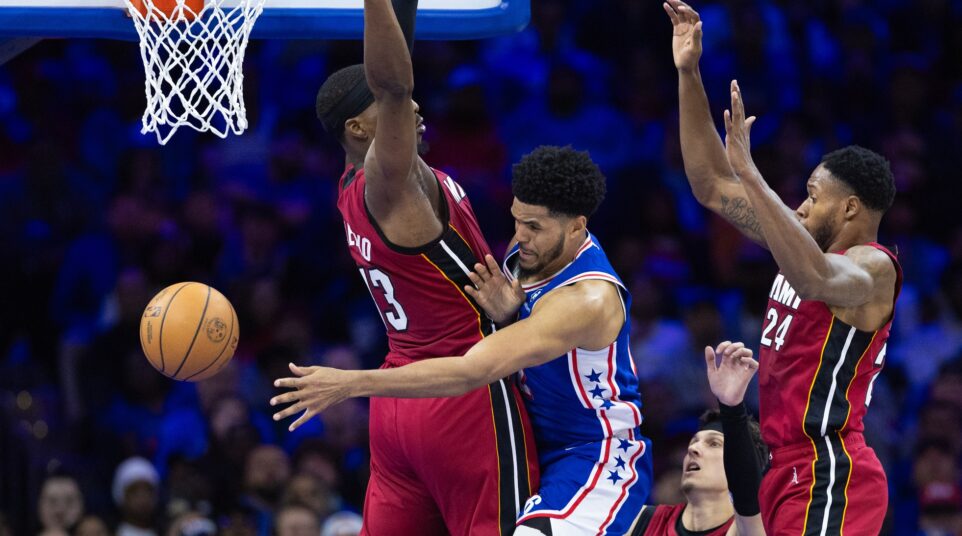
A Short Rant As This Phillies Season Approaches Its End
I’m not sure how I came by my Phillies pessimism. Was it a product of nurture or nature? On one hand, one of my earliest enduring memories as a young Phils fan was watching Joe Carter launch a Mitch Williams offering into orbit. It was an abrupt and brutal ending to what had been a dream season for the upstart ’93 Phillies, and a bitter pill to swallow for a seven year old who was still unaccustomed to the fickle whims of the baseball gods.
The wound caused by Carter’s home run left a scab that would rip open as one lost season followed another. Curt Schilling’s dominance notwithstanding, the Fightins offered little in the way of hope that a return to the playoffs was on the horizon through the rest of the ’90s and well into the next decade.
On the other hand, I was introduced to the game by men who had internalized its hard lessons long ago. My grandfather, Mick, a Massachusetts transplant whose South Bostonese accent was almost as stubborn as his fervent devotion to the Red Sox, had learned how to cope with the constant disappointment of baseball fandom: he came to expect failure. It was a lesson he would pass down to his son, who shared it with me.
Mick died in September 2004, just one month before the Red Sox would improbably break the Curse of the Bambino and claim the World Series title. In one of his last moments of lucidity, Mick happened to be watching a Chicago Cubs game in his hospital room. He stared in disbelief as Nomar Garciaparra (whom he called Gaparra- he could never quite get that name right) took his place at shortstop for the Cubs. It would be the final in a long string of indignities his hometown baseball team imposed on him.
I wasn’t watching the second game of last night’s doubleheader with my dad, but I’d like to think he woke up from an extended nap on the couch just as Seranthony Dominguez started the ninth inning with a leadoff walk. “They’ll lose,” he probably said before dozing off again for the rest of the night. The only mystery is whether he’s already christened the young Phillies righthander with a derisive nickname, as he did for Brad “Lights On” Lidge and “Scranton” Geoff Geary (who was redubbed Ottawa Geoff for the two years the Phillies’ Triple A affiliate moved north of the border).
To paraphrase the ’90s philosophers who called themselves the Gin Blossoms: expect nothing, and never be let down.
And yet, even though I should know better, I find myself growing frustrated as I watch the final days of the Phillies’ 2018 campaign. For weeks, resident Phillies writer BWanksCB has been dutifully chronicling the team’s myriad failures as he issues Last Rites. I figured I would grab a shovel and help him dig the grave.
The mismanagement of this pennant chase has been a sight to behold. It does not seem long ago that the Phillies were viable contenders to at least capture the NL East title. Sure enough, the Phillies were a mere three games behind Atlanta on September 5. The Braves were entering a brutal stretch against the Red Sox and Diamondbacks, while the Phillies had an opportunity to right the teetering ship against division bottom feeders.
The Phils promptly dropped two of three to both the Marlins and the Mets. The prospect of a sweep at the hands of the Nationals looms today as a realistic possibility. The narrow gap between Philadelphia and the Braves has widened into a 6.5 game chasm.
Phillies manager Gabe Kapler arrived in town promising to #BeBold, but the novice skipper has revealed himself to be a man who consistently mistakes movement for action (h/t Ernest Hemingway). The move to pull Justin Bour from Game 1 in the fourth inning for a pinch runner reeked of desperation, and exposed a manager whose nose is too deep in his analytics spreadsheets to see that the players he’s shuttling into the game have failed to perform. Kapler’s overmanagement in Game 1, which included the use of 4 pitchers in a never-ending fifth inning, made Tony LaRussa look like Charlie Manuel.
A bigger problem is the arbitrary leash Kapler has attached to his hurlers, which analyst Ricky Bottalico pointed out on the postgame show. As Dominguez labored through his second inning of work in Game 2, Kapler lost his hook. Maybe his arm was tired from having to pull double duty. Seranthony struggled with his command, loaded the bases, and was replaced with Luis Garcia, who promptly walked in the tying run.
The guy who unapologetically pulled a cruising Aaron Nola after 68 pitches in the first game of the season refused to pull the trigger when his struggling rookie reliever showed signs of distress. How can you ask a fan base to invest in a process that is sometimes incoherent and subject to shifting standards?
The jury is still out on Kapler’s effectiveness as a manager, but this season has in many ways been an improvement on the previous three ninety-plus loss efforts. For better or worse, this year’s iteration of the Phillies took on the persona of its skipper. The team made some strides, but ultimately the Phillies’ talent fell short of the puffery and the overly ambitious rhetoric of Kapler.
If I had to pick one take that has best encapsulated the 2018 Phillies, I would nominate this gem, whispered by an anonymous scout into the ear of Buster Olney:
https://twitter.com/buster_espn/status/971811464699875328?lang=en
Kingery could very well live up to the lofty expectations tossed on his shoulders, but his play has looked less like Dustin Pedroia and more like Cody Asche. For most of the season, the Phillies rookie has played out of position, and it’s shown. Unable to shake his longterm slump, Kingery has been mostly relegated to the bench in favor of Asdrubal Cabrera. Meanwhile, Kapler continues to show faith in Cesar Hernandez, whose ineffectiveness as a leadoff hitter this season hampered the entire lineup’s production.
All in all, the Phillies are just not much fun to watch. They have struggled to score runs. The pitching is inconsistent. And, most frustratingly, the team defense is brutal and error-plagued. How, for example, two catching prospects, Jorge Alfaro and Andrew Knapp, have been able to rise through the system with the defensive limitations both have exhibited is baffling. I’m no baseball expert, and my understanding of sabermetrics is admittedly lacking, but it seems that catching the baseball is kind of fundamental to the catcher position. Alfaro leads the National League in passed balls, and the only thing keeping Knapp away from the leaderboard is lack of playing time.
The answer to the catcher question is likely as inscrutable as the front office’s decision to sign Carlos Santana, relegating Rhys Hoskins to leftfield. If there has been any consistency to this Phillies season, it has been management’s penchant for favoring veterans who are anchored at certain positions at the expense of the development of the young core, which has been treated as defensively interchangeable. Rhys Hoskins is not a major league outfielder any more than Scott Kingery is a major league shortstop. This isn’t Little League, and the front office’s quest to find every advantage has left this team at a fundamental defensive disadvantage.
2018 is over. The only drama left this season is whether the Phillies can keep their heads above .500 and hold off the “hard-charging” Nationals for second place in the division. I wouldn’t bet on either proposition.
Looking ahead to 2019, I expect the Phillies to dole out some more of their Comcast money to augment the talent on the roster. And I think it’s reasonable to believe that Gabe Kapler will derive some valuable lessons from this whirlwind season. Most importantly, I hope the Phillies manager learns to temper his enthusiasm a bit. There’s nothing wrong with making your players earn the praise you heap on them.
And there’s certainly nothing wrong with a little ingrained pessimism. I have plenty to share, and I doubt I’m alone among the fan base.





